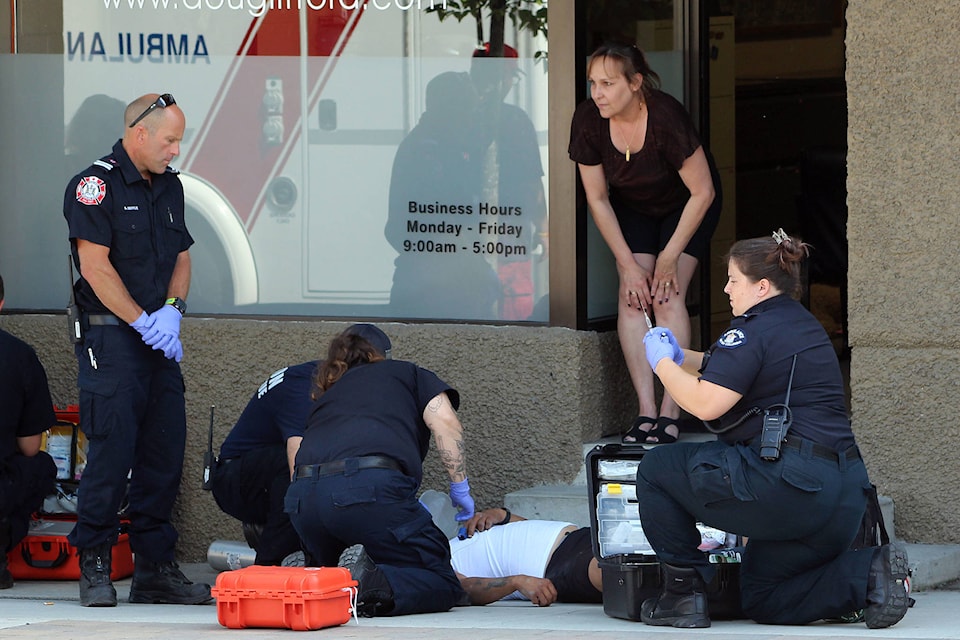It’s a sight that has become more frequent than in past years: a person, lying on the ground, surrounded by emergency personnel trying to revive them.
Overdose and potential-overdose calls have risen steadily in Mission in the past few years.
According to statistics provided by BC Emergency Health Services (BCEHS), paramedics responded to 95 overdose-related calls – most of them not resulting in death – in the Mission area in 2016.
The number jumped to 130 calls in 2017 and 207 in 2018.
In the first six months of 2019, Mission is averaging about 26 overdose calls a month. If that trend remains consistent, there will have been more than 300 overdose calls by year’s end.
While many victims of overdoses survive, thanks to drugs like naloxone, some are not as fortunate.
According to the BC Coroner’s Service, in the first five months of 2019 there have been 41 overdose-related deaths in the Fraser East region, which incorporates Mission, Abbotsford, Chilliwack, Hope and Kent. However, Mission is not in the top 15 reporting townships in B.C. so specific numbers are not available.
Abbotsford had 22 deaths for the first five months of 2019 and Chilliwack had 11 over the same period. That accounts for 33 of the 41 deaths in Fraser East.
The remaining eight fatalities, according to the coroner’s office, occurred in the other areas, but exact numbers are not available.
However, Mission RCMP keep and record their own overdose statistics.
Staff Sgt. Steve Crawford told The Record that in the first six months of 2019, four people died in Mission due to overdoses.
He also said that not all of the incidents are caused by fentanyl and not all of the overdoses are an accident.
The majority of the overdose calls the police receive occur south of Third Avenue, but Crawford said the RCMP don’t attend many of the incidents.
“We don’t necessarily get called; it’s primarily a medical concern,” he explained.
Officers do carry naloxone kits and are given two vials.
“The first one brings them to … and then it’s not uncommon that they doze off again. That’s why they need the second one,” Crawford said.
Unlike the Mission RCMP, who only deal with a small number of cases, Mission Fire Chief Dale Unrau said overdoses and other medical calls take up a majority of firefighters’ time.
“A good 55 to 60 per cent of our call volume is directly attributable to medical calls,” he said.
That includes heart attacks and other serious conditions, in addition to overdoses.
“Fire crews are dispatched in co-ordination with BC Ambulance and we assist them with the delivery of naloxone, in overdose situations,” Unrau said.
Unrau said that, in many cases, firefighters don’t need to use the naloxone.
“A lot of the people who are frequent drug users have access to naloxone kits and what we’re finding is, in a lot of cases, the people who are around the individual involved in the overdose have already administered naloxone.”
